Memento: Christopher Nolan’s Kaleidoscopic, Subjective Neo-noir
While the first major release from future cinematic powerhouse Christopher Nolan technically premiered at the Venice Film Festival in 2000, Memento debuted in American cinemas in March of 2001 and works as an example of the growing bridge between 20 th and 21 st century filmmaking.
Nolan’s first picture, a short, verite noir shot on the streets of London called Following (starring his childhood friend Jeremy Theobald) staked his claim as an innovative new voice in cinema when it was released in 1999, but Nolan—despite being a British national, as well as a dual American citizen thanks to his parentage—struggled to find anyone in the British film industry interested in bankrolling Memento , a picture which took a skewed impression of film noir and projected it through a syuzhet-scrambling prism.
The story, developed in tandem with Nolan’s brother and co-writer Jonathan’s own short story called ‘Memento Mori’, revolves around insurance investigator Leonard (Guy Pearce), who we see at the very beginning execute a man, ‘Teddy’ (played by Joe Napolitano), in cold blood before the narrative unfolds backwards, scene by scene, with the gambit of Leonard having ‘anterograde amnesia’, a rare condition which results in the brain being unable to store recent memories.
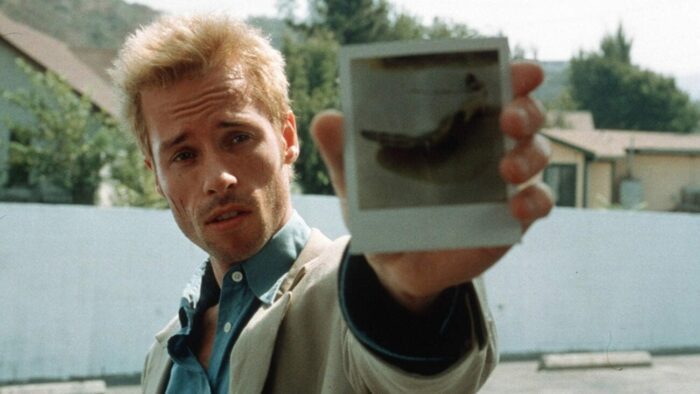
Leonard literally cannot remember what happened in the previous scene we then watch, with the character forced to decode clues tattooed on his body and write himself notes on polaroids with clues that will help him understand the mystery of who murdered his wife—a mysterious figure called John G. Simultaneously, in black and white sequences, we see Leonard at an indeterminate point of time telling a story on the phone of a client, Sammy Jankis (Steven Tobolowsky), suffering from a similar amnesia, which may be the key to decrypting his wife’s murder.
An oft-unrecognised Rosetta Stone to Nolan’s films is that they are deceptively simple at heart, merely wrapped up in his own unique sense of stylistic puzzle box enigma. Nolan himself has claimed as much, as recounted in Creative Screenwriting :
[T]he whole dynamic of the script is aimed at taking a really very simple story and putting the audience through the perpetual distortion that Leonard suffers, thereby making this simple story seem incredibly complex and challenging, the way it would be for someone with this condition. Which isn’t to say that there aren’t all kinds of complexities at the end of the story, but the basic plotting is actually very simple.
Memento , despite the ingenious non-linear structure and inversion of the established tropes of film noir (the corrupt cop, the femme fatale, the careworn and dogged investigator, urban decay), boils down to a psychological trick, as do many of Nolan’s films. Insomnia uses murder in the cold, ceaseless Alaskan daylight to frame the compromised morality of a cop in tandem with a killer. The Prestige presents itself as a gigantic piece of theatre staged against the audience but the biggest trick is that there *is* no trick. Inception dresses up the planting of a simple idea with grand, operatic, action spectacle theatrics. Nolan is as much a showman as The Prestige ’s Robert Angier, and some consequently decry his films as pure artifice, lacking any kind of substance beneath the veneer.

Memento rejects that supposition entirely. It might play as a deliberately straightforward story if you reverse the scenes, as the studio enforced on the eventual DVD release against Nolan’s wishes, but there is a much deeper level of psychology underpinning what turns out to be a nihilistic, fruitless search for a truth that will always evade Leonard: that not only does he murder the wrong man at the beginning of the film, but the man he is looking for is long dead, and ultimately he is chiefly responsible for his wife’s tragic fate and has constructed his own puzzle on a subconscious level to cope with this reality.
Darren Mooney in his book Christopher Nolan: A Critical Study of the Films contends that Memento engages with the text in the form of ‘narrative as conspiracy theory’:
Leonard fashions an epic narrative around the death of his wife, positioning himself as a lone crusader hoping to avenge her death. He concocts an elaborate mythology about her murder scrounged together from incomplete information and vague clues that provide him with a sense of purpose ands direction. There are drug dealers and warnings, torn pages and redacted information … Leonard cannot imagine a world without an enemy against which he might define himself, so he cultivates a conspiracy and a mythology to imbue his life with a grander sense of purpose.
The ‘90s were, of course, a cornucopia of resurgent interest in conspiracy theory, with phenomena on television such as The X-Files helping to foster an inherent American cultural distrust of big government, echoing similar sentiments in the post-Nixon, global recession era of the 1970s which saw a raft of popular, successful conspiracy thriller pictures.
Memento utilises the twisted building blocks of film noir to align itself with the idea of internal conspiracy, that we may not be able to trust ourselves, let alone the kind of big government who just months before Memento ’s release had seen the two-term Clinton Administration give way to the George. W. Bush. Jr era following a controversial, contested Presidential election at the end of 2000 in which voter fraud in the swing state of Florida was hugely suspected, and remains a topic of uncertainty two decades on. 2001 began with a Republican government who would inherit the mantle of a White House deeply mistrusted by vast swathes of the populous, and would soon become part of a swirl of post-9/11 conspiracy theory not so potently witnessed since the Kennedy assassination’s aftermath.
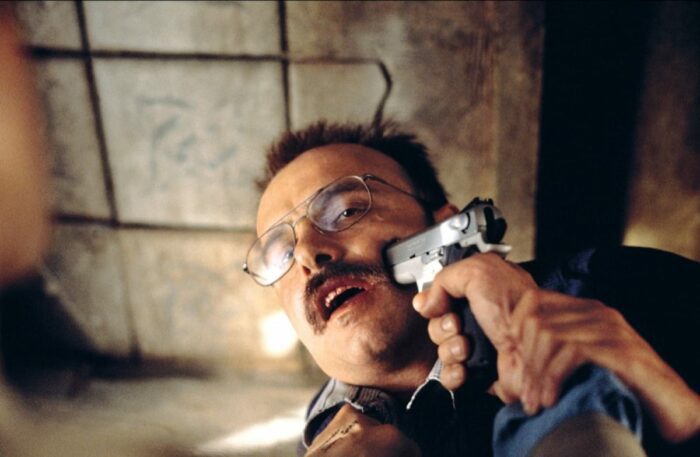
That’s another key to Nolan’s films. They might appear to involve external reality and broad, grand statements, but they often resolve themselves to an internal, almost mythic journey for the (always) male protagonists. Bruce Wayne might don the costume and become Batman but the entire Dark Knight trilogy concerns his own haunted psychology regarding the indiscriminate murder of his parents, and the lawlessness of modern society that encourages him to become a symbol of justice.
Inception ’s Cobb constructs labyrinthian dream realities to accomplish his machiavellian goals as the ultimate grifter, but he is trapped by the spectre of his undead wife. Interstellar ‘s Cooper might traverse space and time in order to find a suitable new earth for colonisation, but all he really seeks to do is get back to his daughter. Leonard is Nolan’s first true protagonist on this journey inward, as he seeks to resolve his own loss by constructing a grand narrative beyond himself, but this works as the recurring trope in the lexicon of Nolan’s films beyond Memento .
What Memento demonstrates is a willingness to challenge audience perceptions about narrative in a way that deepens the embrace of non-linear structure Quentin Tarantino favoured in Pulp Fiction during the mid-90’s, but Nolan is one of the few filmmakers who after 2001 manages to transform these smaller, low budget puzzles into broad, sweeping, popular entertainment. Similar emerging filmmakers of the same era such as Darren Aronofsky or even more so, Shane Carruth, who with pictures such as Pi or Primer confounded audiences with a willingness to push at the edges of accepted reality, have struggled to emerge as an industry of their own as Nolan has.

Nolan managed to transpose his stylistic framework onto the popular consciousness by making his films intelligent without being alienating, though he subsequently has been accused of high-mindedness and conservatism as a result. Ultimately, you get the sense Nolan values emotion before construction, even if that isn’t immediately apparent. Michael Caine’s Cutler in The Prestige may assert that “you want to be fooled”, but this too may be a trick. Nolan wants us to understand, on a thematic level.
You do understand Memento on that basis. The intricacies may still baffle, but as an audience we can read what Leonard is seeking to achieve, that catharsis. The chilling warning Nolan provides, however, is that we may not be ready to embrace such a reality. He frames this when discussing the ending :
The most interesting part of that for me is that audiences seem very unwilling to believe the stuff that Teddy [Pantoliano] says at the end and yet why? I think it’s because people have spent the entire film looking at Leonard’s photograph of Teddy, with the caption: “Don’t believe his lies.” That image really stays in people’s heads, and they still prefer to trust that image even after we make it very clear that Leonard’s visual recollection is completely questionable. It was quite surprising, and it wasn’t planned. What was always planned was that we don’t ever step completely outside Leonard’s head, and that we keep the audience in that interpretive mode of trying to analyze what they want to believe or not. For me, the crux of the movie is that the one guy who might actually be the authority on the truth of what happened is played by Joe Pantoliano… who is so untrustworthy, especially given the baggage he carries in from his other movies: he’s already seen by audiences as this character actor who’s always unreliable. I find it very frightening, really, the level of uncertainty and malevolence Joe brings to the film.
Nolan’s assertion is that while Leonard brings his own sense of confirmation bias to proceedings in Memento , so might we as an audience. The world after 2001 will increasingly question the veracity of memory and the power of truth, and as a filmmaker who has often sensed the way the cultural wind is blowing and who very much explores the post-9/11 landscape of reactionary politics and terror in his films, Nolan’s striking first film emerges from the assured calm of the ‘90s headlong into a kaleidoscopic decade of narrative instability.
James Mooney perhaps contextualises this well :
At the end of Memento , Teddy reveals ‘the truth’ about the assault and the death of Leonard’s wife. This perhaps throws some light on Teddy’s particular use of the term ‘incident’ in the conversation referenced above. Many critics have debated whether Teddy’s testimony is to be trusted, however, there is a reveal earlier in the film which may establish this (Nolan himself has stated that the answer is in the film). What this twist shows, is that sometimes our memories deceive us, or rather, sometimes we deceive ourselves by ‘choosing’ to forget or by manipulating our memories of past events.
Whose lies do we believe, in the end? The world’s or our own?

Written by A. J. Black
Author of The Cinematic Connery: The Films of Sir Sean Connery + other books • Writer on film/TV • Podcaster/network chief at We Made This • Occasionally go outside.
christopher nolan Darren Aronofsky Darren Mooney Guy Pearce James Mooney Jeremy Theobald Joe Napolitano Michael Caine Quentin Tarantino Shane Carruth Venice Film Festival
Haha! Excellent idea, you’re welcome. Thanks for reading, Michael & hope you enjoy your eventual rewatch!
Fabulous piece, A. J. Makes me want to re-watch MEMENTO again, something I haven’t done for a very long time. . . . And thanks for “syuzhet,” which I intend to deploy at the first opportunity in my next Scrabble or Bananagram game.
Leave a Reply Cancel reply
Film Obsessive welcomes your comments. All submissions are moderated. Replies including personal attacks, spam, and other offensive remarks will not be published. Email addresses will not be visible on published comments.
Save my name, email, and website in this browser for the next time I comment.

Pokémon, Steampunk and Mutant Trees: My Favourite Anime Films

Slap Shot Still Scores Goals
Add to Collection
Public collection title
Private collection title
No Collections
Here you'll find all collections you've created before.

10 Things About Cinema
Step into the magic of the big screen with our cinema blog
Unlocking the Complexities of Christopher Nolan’s ‘Memento’: A Cinematic Puzzle Worth Solving
Christopher Nolan ‘s Memento is a complex and thought-provoking film that has continued to mystify viewers since its release in 2000. The film is a cinematic puzzle, with its fragmented narrative structure and unreliable protagonist making it a challenging but rewarding viewing experience. In this article, we will delve deep into the complexities of Memento, analyzing its themes, characters, and narrative structure to uncover the hidden meanings and messages within the film. Whether you’re a longtime fan of the film or new to the world of Christopher Nolan , come join us as we attempt to unlock the mysteries of Memento.
Christopher Nolan ‘s Memento is a complex and thought-provoking film that has continued to mystify viewers since its release in 2000. The film is a cinematic puzzle, with its fragmented narrative structure and unreliable protagonist making it a challenging but rewarding viewing experience. In this article, we will delve deep into the complexities of Memento, analyzing its themes, characters, and narrative structure to uncover the hidden meanings and messages within the film. Whether you’re a longtime fan of the film or new to the world of Christopher Nolan , come join us as we attempt to unlock the mysteries of Memento.

Introduction to the film and its premise
When it comes to mind-bending thrillers, few directors can match the genius of Christopher Nolan . In his 2000 masterpiece Memento, Nolan explores themes of memory, identity and truth through the story of Leonard Shelby , a man seeking vengeance for his wife’s murder despite his own anterograde amnesia. With the narrative structure presented in reverse chronological order, the audience experiences the same disorientation and confusion as Shelby, making Memento a unique and unforgettable cinematic experience. In this analysis, we will dive deeper into the film’s premise, explore its underlying themes, and discuss the impact it has had on the world of cinema.
The non-linear storytelling structure and its effectiveness
Christopher Nolan ‘s Memento is a prime example of a film that uses a non-linear storytelling structure. Instead of following a straightforward, chronological narrative, the film jumps back and forth in time, gradually revealing the story in pieces. This technique can be incredibly effective, as it adds an element of mystery and intrigue to the film. It also allows the audience to piece together the story alongside the protagonist, creating a more immersive viewing experience. However, this structure can also be challenging to follow, requiring close attention from the viewer. Overall, Memento’s non-linear storytelling structure is a highlight of the film, showcasing Nolan’s skill as a filmmaker.
The theme of memory and its importance in the film
In Christopher Nolan’s Memento, the theme of memory plays a central role in the film’s narrative structure. The protagonist, Leonard Shelby , suffers from anterograde amnesia, which causes him to forget any new memories within a few minutes. As a result, he relies heavily on notes, tattoos, and Polaroids to help him remember important details, such as the identity of his wife’s killer. The film’s non-linear structure emphasizes the importance of memory and how it shapes our perception of reality. In Memento, memory is not only crucial to the plot but also serves as a thematic metaphor for our own subjective experiences and how we construct our own personal narratives.
The character of Leonard Shelby and his unreliable perspective
The character of Leonard Shelby in Christopher Nolan’s Memento is a fascinating study in an unreliable perspective. As a man with anterograde amnesia, Leonard ‘s ability to form new memories is impaired, making him dependent on a system of notes and tattoos to function in his daily life. This reliance on external aids, combined with his obsession with finding his wife’s killer, create a unique lens through which the story is told. The audience is forced to question what is real and what may be a product of Leonard’s faulty memory, adding a layer of complexity to an already intricate plot. Nolan’s masterful direction, combined with Guy Pearce ‘s powerful performance, makes for a compelling exploration of the human mind’s capacity to deceive itself.
The role of Teddy and his relationship with Leonard
Teddy is an intriguing character in Christopher Nolan’s Memento, featuring a complex relationship with the protagonist, Leonard . Throughout the film, he serves as a guide and a confidant to Leonard , who suffers from short-term memory loss. Teddy is the only person that Leonard can rely on, but their relationship is far from straightforward. As the plot unravels, it becomes clear that Teddy may have ulterior motives, and his true intentions are gradually exposed. This dynamic adds layers of tension and suspense to the film, and Teddy ‘s role as a supporting character is critical to the success of the story.
The significance of the tattoos and Polaroids in the narrative
In Christopher Nolan’s Memento, the tattoos and Polaroids play a significant role in driving the narrative forward. The tattoos on the main character, Leonard , are a visual reminder of his quest for vengeance and his inability to form new memories. Each tattoo is a clue to his past and the people he is seeking revenge against. On the other hand, the Polaroids serve as a temporal anchor for Leonard , as they capture significant moments in his journey and help him piece together the events of his life. Both the tattoos and Polaroids are crucial elements in the film’s non-linear storytelling, providing a unique and engaging viewing experience for the audience.
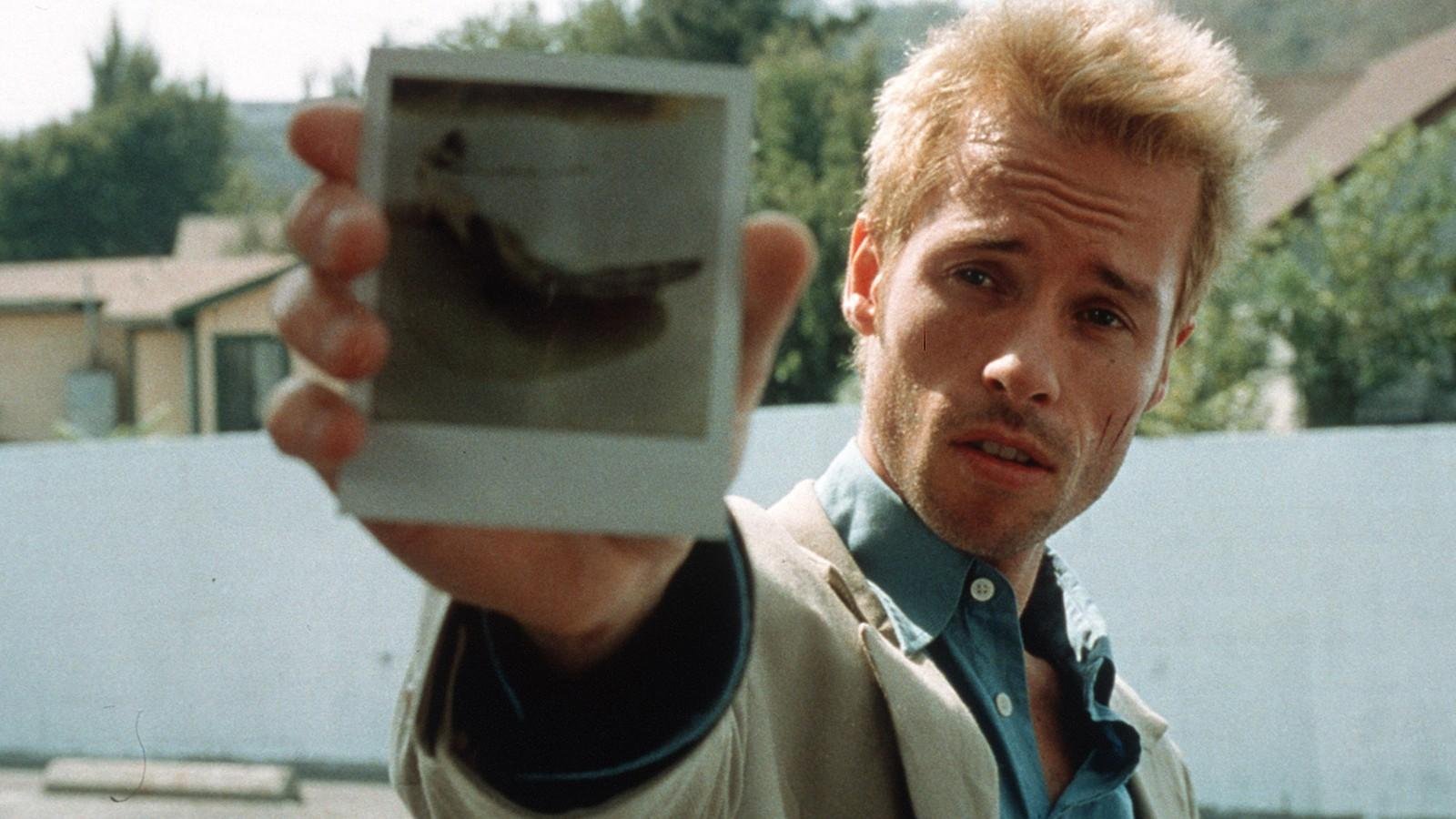
The use of black and white vs color cinematography
One of the defining aspects of Christopher Nolan ‘s Memento is its use of black and white versus color cinematography. The film’s protagonist, Leonard , suffers from a condition that causes him to forget everything that happened in the past. The black and white scenes depict events that happened before the condition set in, while the color scenes depict the events that occur after the condition. This unique approach to cinematography allows the audience to experience Leonard ‘s confusion and disorientation firsthand. The use of black and white vs color also adds to the film’s noir atmosphere, enhancing its themes of memory and perception.
The ending and its ambiguity
Christopher Nolan ‘s Memento is a groundbreaking film that subverts the traditional linear narrative structure. While the movie is gripping and engaging throughout, it is the ending that leaves a lasting impression. The final scene, which reveals the truth about protagonist Leonard Shelby ‘s condition, is intentionally ambiguous, leaving the audience to draw their own conclusions about what has happened. This ambiguity is both frustrating and intriguing, leaving viewers with unanswered questions and a desire to re-watch the movie to piece together the clues. The ending of Memento is a masterful example of how embracing ambiguity can leave a lasting impact on the audience.
Nolan’s directorial style and its impact on the film
Christopher Nolan ‘s directorial style is known for its innovative and immersive nature. In his film, Memento, Nolan uses a non-linear narrative structure to tell a story that explores the theme of memory and identity. His use of reverse chronological order and jump cuts creates a sense of confusion and disorientation, putting the audience in the shoes of the protagonist who suffers from short-term memory loss. The impact of Nolan’s directorial style in Memento is evident in the way it engages the audience in a unique and thought-provoking storytelling experience. It also sets the tone for Nolan’s future films, which continue to challenge and captivate audiences with their unconventional approach to filmmaking.
The influence of Memento on modern cinema and storytelling techniques
Memento, directed by Christopher Nolan , has had a significant impact on modern cinema and storytelling techniques. The nonlinear narrative structure, where the story is told in reverse order, has become a popular technique used in many films today. This structure has also inspired other directors to experiment with unconventional storytelling methods. Memento also showcased Nolan’s unique and innovative directing style, which has continued to influence and inspire filmmakers to this day. With its complex and thrilling plot, Memento has become a cult classic and a benchmark for modern storytelling in cinema.
For more information about Christopher Nolan’s Memento analysis, including movie details, cast information, etc.. check out the filmaffinity page .
More Stories

Exploring the Themes of Violence and Fate in ‘No Country for Old Men’: A Cinematic Analysis

The Best Supernatural Movies to Watch for a Spooky Night at the Cinema

The Heart-Wrenching Portrayal of the Holocaust in ‘Son of Saul’
Leave a reply cancel reply.
Your email address will not be published. Required fields are marked *
Save my name, email, and website in this browser for the next time I comment.

Pioneering the Future of AI-Enhanced Storytelling
The Narrative Structure of Christopher Nolan's Memento
Supporting premise through experience.
Everyone loves out-of-sequence storytelling. Pulp Fiction, Arrival, and The Usual Suspects top the list of films that ignore the exact chronological order of events. Authors develop the narrative structure of these films the same way they do when working a more linear approach. While seemingly complex and unknowable, the path to a structure is clear: Know what it is you want to say with your story.
Even for something as delightfully complex and sophisticated as Christopher Nolan’s Memento .
Weaving and Storytelling
Recently, I received an email regarding the plot-defying antics of films like Memento or Pulp Fiction :
I was reading around on the forums and periodically the distinction between storyforming and storytelling (or weaving) comes up in regards to the sequence of events. Would it be correct to say that from the standpoint of a storyform the events are always chronological?
The storyform the writer refers to is the hidden code of the premise (previously referred to here as the Narrative Argument ). Defined by the Dramatica theory of story, this code is a collection of seventy-five Storypoints that meld Character, Plot, Theme, and Genre into a single argument.
Story forming sits apart from Story telling . The Storypoints of narrative structure and their specific Encoding—whether an Element of Avoid is about running away or about preventing another—are a part of the Storyforming process.
How those specific encodings are presented is part of the Storytelling process. Storyweaving, a particular stage within Storytelling, is the process of laying those Storypoints down in preparation of delivery to the Audience.
For example, if I have a story that’s jumping around between the present and the past:
A - In 2019 at 1pm I face off with a burglar
B - In 1990 I’m failing a homework assignment
C - In 2019 at 2pm the burglar is beating me up
D - In 1994 I’m running away from a problem
E - In 2019 at 3pm I valiantly get back up and chase down the burglar.
Does this mean in all cases that from the Storyform’s standpoint the sequence is B-D-A-C-E?
And the answer is yes. B-D-A-B-C convey the order of Storybeats within the storyform.
The storyform represents the chronological order of events regardless of presentation. The storyform structures the Author's premise.
If B-D-A-C-E tells a complete story, then A-B-C-D-E represents the Storyweaving for that narrative.
The premise, or Narrative Argument, is clear to the Audience, if they can decipher this original order by the end of the story (consciously, or subconsciously). Can the Audience understand what it all meant, and what the Author was seeking to prove?
Meaning determines the narrative structure.
The Meaning of Story Structure
For the longest time, people thought stories were merely cultural myths—heroic journeys of personal and possibly spiritual transformation. These were written down and collected into a paradigm of narrative known as the Hero’s Journey . Eventually, there was even a Heroine’s Journey.
In the early 2000s, mythos gave way to pattern matching with the introduction of the Save the Cat! paradigm . No longer tied to our old need for spiritual growth, Authors were free to concentrate on Dark Night of the Soul moments solely. The Bad Guys Closing In became just as important, if not more so, then Returning Home with an Elixir. Meaning became something repeatable—easily identified by what worked before in generations past.
The Hero’s Journey and Save the Cat! suffer from the same indisputable deficiency: their framework is based on recognizing commonalities, rather than identifying the Author’s intent. Purpose requires an order of sequencing that supports that purpose. A story of Triumph demands a structure utterly different than a Tragedy.
Enter the Dramatica theory of story .
Dramatica looks to the Author’s intent first. By identifying the critical components of the premise, Dramatica supplies all the necessary information required to make that argument successfully.
What is the actual Source of Conflict in the story? What are the various points-of-view engaged with this Problem? Were they right to alter their approach, or did it end in abject failure?
With Dramatica—and my app built on the fundamental foundations of the theory, Subtxt—Authors can now account for the meaning they want to convey to their Audience.
The message is now part of the structure.
A Better Appreciation of Narrative Structure
So, does that mean the message behind Memento is one of confusion?
No—but it does mean that Christopher Nolan used sophisticated editing techniques to amplify and support the narrative structure of that film.
The narrative argument of Memento is this:
While tragic to the individual, you can devise a way to alleviate personal guilt by focusing on everything external to yourself.
Probably not what you expected, but if you think back over the entire experience of watching Memento , you would be hard pressed to find a more accurate objective interpretation of the meaning behind the film’s events. Leonard succeeds by imagining a new John G.—someone else he can focus his compulsion for revenge upon. While personally tragic, this outward attention keeps the loop going.
The complexity of this argument demands a unique set of dynamic Storypoints that eventually end in a Main Character Problem of Ability. The Main Character Problem is an Appreciation of narrative structure that focuses on the specific Element driving the central character forward into the story.
A lack of Ability—or disability, in Leonard Shelby’s case, needs to be at the heart of what is driving the Main Character for Memento to communicate the above narrative argument or premise.
No one ever said writing a story was easy. 😁
Of Story and Argument
Character is Theme. Theme is Plot. Plot is Character. The four pillars of a story all work together to convey a particular Narrative Argument. Once you understand the existence of a connection between argument and the particulars of the story, you begin to wonder which came first—the story or the argument?
Both go hand-in-hand. One does not exist with the other. Balance in all things.
Leonard’s disability, his short term memory loss, is both the story and the argument of Memento .
Guilt is a state of mind. And while our minds eventually lead us to a place where we can forgive ourselves, the ego is strong. The only way to maintain that denial of personal accountability is to actively stay focused on the external—while keeping blind to the internal.
It’s always someone else’s fault.
Short term memory loss is more than an amusing story concept, then—it’s essential to the idea of the argument. Allowing the Audience to experience the act of staying blind to ourselves reinforces the message and drives home the sense of personal tragedy.
The Purpose of the Main Character
The Main Character Throughline is not about a character—it’s about a perspective .
For an argument to be successful, it needs to approach its message from all sides. You can’t merely argue one side of a debate in hopes that it maintain the test of further scrutiny.
One side essential to explore within an argument is the personal point-of-view—the role and responsibility of the individual within the context of the narrative. This Main Character point-of-view brings the audience into the discussion. It allows them to become a part of the message by positioning them in that personal point of view. The experience becomes less a lecture and more an appreciation of the totality of the message.
The Inherent Structure of a Narrative
The complex and sophisticated Storyweaving found in Memento is more than a hook—its essential towards communicating Nolan’s argument. That sense of memory loss—of being able to forget and not being able to ignore—is woven tightly into the very fabric of the narrative.
The mind naturally seeks meaning. It wants to unravel the threads of a story because the mind wants to appreciate the Author’s unique point-of-view.
Knowing what that point-of-view is—what you’re actually saying and arguing with your story—then becomes paramount.
That argument has a structure to it.
That argument has a storyform.
How it’s wrapped up and woven together for the Audience is an entirely different thing.
The presentation is not the story form .
As we experience Memento and begin to unravel the individual threads, we begin to piece back together the original structure inherent in the narrative. We begin to understand where the Author Christopher Nolan is coming from and we have a better idea of how to alleviate our own feelings of guilt.
Even if it means keeping ourselves blind to the truth.
Blinding ourselves along the way.
Download the FREE e-book Never Trust a Hero
Don't miss out on the latest in narrative theory and storytelling with artificial intelligence. Subscribe to the Narrative First newsletter below and receive a link to download the 20-page e-book, Never Trust a Hero .
Academia.edu no longer supports Internet Explorer.
To browse Academia.edu and the wider internet faster and more securely, please take a few seconds to upgrade your browser .
Enter the email address you signed up with and we'll email you a reset link.
- We're Hiring!
- Help Center

The Philosophical Significance of Christopher Nolan’s ‘Memento’ (2000)

Memento (2000) presents a visual account of Clarke & Chalmer’s (1998) extended mind hypothesis in which objects in the environment function as part of the mind, as shown through the character of Leonard Shelby and his cognitive relationship with objects in the world (Clarke, 2010). This essay will discuss and assess Memento as containing both philosophical and artistic thought-experiments, through the cognitive and ontological views of Clarke & Chalmers, Heidegger and Wittgenstein. I will argue that Clarke & Chalmers extended mind hypothesis is fundamentally flawed in that it views objects as ‘present-at-hand’ and that Memento does contain philosophical thought-experiments, in agreement with Hutchinson & Read (2005).
Related Papers
Rachel Rits-Volloch
Acta Universitatis Sapientiae, Film and Media Studies
Steffen Hven
Although Christopher Nolan’s Memento (2000) has been the subject of numerous critical examinations, the unique manner in which the film’s reverse-chronological dramaturgy interweaves the spectators’ cognitive-analytical attempts to ensure causal-linear coherency together with a corporal-affective sensation of temporal loss remains underexplored. This I believe is due to the inability of prevalent narratological terms of cutting across the current divide and uniting on the same conceptual plane the cinematic spheres of the cognitive-analytical, evaluative, and interpretative, on the one hand, with the visceral, haptic, and sensory-affective, on the other hand. As an attempt to carve out a conceptual ground where these key facets of the cinematic experience can be unified in a nonhierarchical and nonreductive manner, I propose an embodied reconceptualization of the cognitive-formalist concept of the fabula. In order to do so, however, it is necessary to dispute a series of dominant as...
Josef Früchtl
This article defends the thesis that aesthetic experiences encourage us to act as if we could trust in the world in an ontological sense. This specifically holds for an aesthetically successful and complex film. This article wants to demonstrate this argument in an exemplary way by referring to Christopher Nolan’s films ‘Memento’ (2000) and ‘Inception’ (2010). These films are examples of complex storytelling insofar as the narration of the story becomes so multifaceted that it culminates philosophically in epistemological and ontological issues. ‘Memento’ confronts us with the proposition that one only believes what one wants to believe. Its strength lies in the experience of the reversal of time: it is as if the protagonist had not acted. The strength of ‘Inception’, on the other hand, lies on a pragmatically dissolved scepticism. Reality is not a matter of theoretical certainty; but neither is it simply a matter of faith. The real is what we are forced to believe from trust. Unsur...
Acta Univ. Sapientiae , Film and Media Studies
Although Christopher Nolan’s Memento (2000) has been the subject of numerous critical examinations, the unique manner in which the film's reverse-chronological dramaturgy interweaves the spectators’ cognitive-analytical attempts to ensure causal-linear coherency together with a corporal-affective sensation of temporal loss remains underexplored. This I believe is due to the inability of prevalent narratological terms of cutting across the current divide and uniting on the same conceptual plane the cinematic spheres of the cognitive-analytical, evaluative, and interpretative, on the one hand, with the visceral, haptic, and sensory-affective, on the other hand. As an attempt to carve out a conceptual ground where these key facets of the cinematic experience can be united in a nonhierachical and nonreductive manner, I propose an embodied reconceptualization of the cognitive-formalist concept of the fabula. In order to do so, however, it is necessary to dispute a series of dominant assumptions about cinematic spectatorship and narrative comprehension that automatically come with this narratological concept.
Aswin Prasanth
Christopher Nolan’s films are narratives of alternative realities and metamorphosing multiple subjectivities. His films include Following (1998), Memento (2000), Insomnia (2002), Batman Begins (2005), The Prestige (2006), The Dark Knight (2008), Inception (2010), The Dark Knight Rises (2012) and Interstellar (2014). Nonlinear narrative structure, flashbacks, existential angst and sociological ideas, identity crisis and fragmented subjectivity, self deception, unreliability of the human memory, metafictive elements, ambiguous endings and morally ambiguous characters are the major characteristics of his films. The line between reality and fantasy is blurred in Nolan’s films which puts his protagonists in difficult situations. Nolan’s filmmaking style is influenced by the film genres like noir, sci-fi, psychological thriller and crime drama. Nolan’s films Memento and Inception explore the wide range of possibilities of postmodern filmic narratives. Memento tells the story of Leonard Shelby, a man suffering from anterograde amnesia, searching for his wife’s murderer. Inception tells the story of Dom Cobb, a corporate espionage and estranged father who can steal valuable information from persons’ psyche by entering into their dreams, trying to return home to his children. The action of these films is related to the reliability of the memory/dream of the narrator and the protagonist-narrators’ inability to differentiate between reality and illusion.
*Memento*: philosophers on film
John Sutton
The Journal of Aesthetics and Art Criticism
Laura T. Di Summa
John Christen Alfajora
Martin Lefebvre
Öivind Fuglerud , Leon Wainwright
by Øivind Fuglerud & Leon Wainwright (eds) Berghahn Books, 2015 Physical objects have tremendous associative power embodying more than remembrance and mental connections. They connect with us individually, affecting us bodily through all of our senses creating strong feelings through their use and presence and collectively as they create and recreate our social relations. This is the premise of Øivind Fuglerud and Leon Wainwright's edited volume, Objects and Imagination: Perspectives on Materialization and Meaning, which proposes a new integrative approach to the study of the social aspects of art and material culture. Each of the contributors focuses on the relationships between the physical and ideational realms, examining the ways individual imaginations combine into shared imaginaries in which objects are created and, in turn, how objects create and maintain social relations. Objects and Imagination grew out of a series of meetings and conversations spanning 2010 to 2013 and is the third in a series of volumes edited by Birgit Meyer (who contributes chapter 8 to this volume) and Marušcka Svašek (who is a coauthor of chapter 10) titled, Material Mediations: People and the Things in a World of Movement. In this series, theoretical debates grounded in ethnographic studies, look at the " dynamics of material production and cultural mediation in an era of intensifying globalization and transnational connectivity " (p. ii)." The contributors and editors of Objects and Imagination come from a variety of backgrounds including social anthropology, cultural history, the anthropology of religion, and contemporary art history and bring their diverse perspectives to focus on specific contexts which illustrate the ongoing relationships created and perpetuated by the objects we
Loading Preview
Sorry, preview is currently unavailable. You can download the paper by clicking the button above.
RELATED PAPERS
Giuseppe Gatti
Catalina Botez
Jean-Yves Heurtebise
Contemporary Aesthetics
Christopher Yates
Memento Mori
Journal of World Literature
Delia Ungureanu
Chari Larsson
Samantha Schäfer
Altered States
Barbara Grespi
John Carvalho
Phainomenon
Juhani Pallasmaa
Jane Stadler
Robert Sinnerbrink
Keith Tilford
Babu Thaliath
Göran Sonesson
Robin Curtis
Memory and Aesthetic Experience
Filipe Martins
Charles A. J. Burnetts
Andrew Vallance
Eidos. A Journal for Philosophy of Culture
Nélio Conceição
Claire Thomson

RELATED TOPICS
- We're Hiring!
- Help Center
- Find new research papers in:
- Health Sciences
- Earth Sciences
- Cognitive Science
- Mathematics
- Computer Science
- Academia ©2024
“Memento” by Christopher Nolan Essay
- To find inspiration for your paper and overcome writer’s block
- As a source of information (ensure proper referencing)
- As a template for you assignment
Memento is an American psychological thriller by Christopher Nolan that narrates the story about Leonard Shelby, a man who suffers from loss of long-term memory, which prevents the heroes from storing new memories. In order to remember the events from the past, Shelby develops a system of notes, photos, and tattoos that remind of his intentions. The movie has a peculiar narrative structure that is composed of two chronologically opposite lines.
The first sequence of scenes proposes a set of black-and-white episodes that provide a chronological order of events. This part is combined with as series of colored scenes that are presented in a reverse order. Both sequences are logically united at the end of story to make sense of the scenes. The nonlinear organization makes the reader be concentrated on the plot, which is a peculiar feature of all Nolan’s movies.
The sophisticated structure of the movie prevents the viewers from making sense of the scenes and contributing to their puzzling nature. Despite the fact that the main plot runs backwards, the logic is still underscored in the hero’s actions for which logic is the only tool for coordinating his everyday world.
Shelby’s short-term memory does not allow him to find his wife’s killer; it also makes him an antagonist of the story whose only goal is to find the man who killed his wife. As he strives to remember, the hero develops an advanced system of recollections that permit him to continue his searching for the truth.
The tattoos on his body testify to his firm beliefs in the fact of killing, but Leonard never understands that facts imprinted on his body could be as subjective as the recollections. Therefore, the conclusions he makes about the surrounding events premise on his solid observations rather than on facts and hard evidence. Therefore, Sheldon faces a challenge of distinguishing between true and false facts.
According to Lin, “Logic is no help against the nuances of this situation and its inadequacy is perfectly illustrated when Leonard…is confronted by a warning from another dubious ally” (27). Due to the slight boundary between the subjective and the objective, there are considerable doubts concerning the adequacy of Shelby’s intentions.
The main plot of the movie prioritizes the protagonist mission despite the disoriented scene structure and Shelby’s failure to build the sequences of events stipulating the crime. However, at the end of the story, two scene sequels are united to organize the entire picture and makes sense of the hero’s actions. The end of the movie also undermines the logic and objectivity that Leonard employs in the pursuit of justice.
Throughout the movie, the hero suffers from constant victimization because the recollection about the moment of his wife killing never leaves him alone. The hero, therefore, is considered the victim of short-term memories and violence.
Failure to feel the sense of time, the hero could not realize how long he lives without his wife. At the same time, the undertone of uncertainly is intertwined with his wives’ remarks about Leonard’s genuine intentions and goals. In fact, further events in the movie make the viewers focus on the uncertainty and ambivalence of his notes and conclusions that distort the facts.
Aside from the plot of the movie, as well as the objectivity of Leonard’s judgments, the film focuses on the hero’s ability to cognize, reason, and connect the facts into a logical chain of events. As Sternberg notes, “the film illustrates the ways the brain continuously collects…inputs from our surroundings and our emotional responses to them to form the memories that create our own unique and constantly evolving identity (1661).
Mysterious events of Leonard’s life are combined with the horrible death of his wife, and the viewers try to collect the glues into a whole. The story, therefore, emphasizes the incredible importance of memory for putting all episodes into one logical story. For the hero, the present time is the only time he lives in, but the viewers receive new experience while observing the hero’s recollection and evolution.
Therefore, Sternberg agrees that, “without memory, events happen, emotions are felt, and times moves, but those experiencing the passing show cannot retain any of it” (1661).
The hero, therefore, is doomed to face old experiences and re-live them again and again to focus on the moment he needs. Therefore, the sense of the self is exterminated because Leonard stops changing his experience whereas viewers gain new experience while viewing new details revealed in the scenes.
While watching the movie, the viewers should also rely on their memory only in order to keep track of all the details throughout the movie. However, the end of the story is so sophisticated that they should go back to the very beginning of the movie to find out the logical sequences (Sternberg 1661).
At the same time, while connecting the events by means of our memory, viewers also question themselves whether the memory is a reliable tool for analyzing and reasoning the objective reality. Various approaches to storing and retaining memories are brightly highlighted in the movie; more importantly, the movie also focuses the connection between body and mind that premise on the Freudian theory of Skin Ego.
Therefore, film discovers the sophisticated structure and interaction of time and space in forming the memory storage. At the same time, it is also necessary to define how the hero’s subjectivity influences the perception of temporal and spatial characteristics. On the one hand, memory is the only warehouse of information that a person relies on to shape their outlooks and experiences in live.
On the other hand, Christopher Nolan questions the reliability of memory as an objective source of data because each detail that the hero finds out focuses on his previously forgotten experiences (Pile 135). So, each time he receives information, Leonard can interpret it differently in the light of the new circumstances surrounding the facts.
With regard to the above-presented arguments, the concept of time, as the factors that influence the searching for absolute truth, creates new concepts in the movie.
Memento refers to a mediation in which there is no place for absolute truth but a series of lies that are followed with other false assumptions based on these lies (Lyons 130). Therefore, the movie does not focus on details, but also on Shelby’s ability to connect these details by means of logic and order, but not by means of memory.
In conclusion, Memento bears a complex mixture of temporal and spatial deviations that premise on the hero’s failure to gain new experiences and connect them to the old ones. Without a memory, a person loses the opportunity to feel and understand.
The second focus of the movie refers to the reliability and objectivity of the hero’s judgments because the facts he learns within the short cam perceive differently. Therefore, there is no absolute truth, but a reasoned, logical change of facts that are connected by memory and experience.
Works Cited
Lin, Francie. “Double Think”, The Threepenny Review. 87 (2001): 27. Print.
Lyons, Diran. “Vengeance, the Powers of the False, and the Time-Image in Christopher Nolan’s Memento.” Angelaki: Journal Of The Theoretical Humanities 11.1 (2006): 127-135. Print.
Pile, Steve. “Topographies of the Body-And-Mind: Skin Ego, Body Ego, And The Film ‘Memento’.” Subjectivity: International Journal Of Critical Psychology 27.1 (2009): 134-154. Print.
Sternberg, Esther. “Piecing Together a Puzzling World”, Science. 292.5522 (2001): 1661-1662. Print.
- Why We Enjoy Horror Films
- The Film "Touki Bouki"
- The Film "Inception" by Christopher Nolan
- “Behind the Cover Story: ...” by R. Nolan
- Narration Discourse in “Following” by Christopher Nolan
- Cultural Revolution in China in “Hibiscus Town”
- Australian National Identity as Portrayed in “Love the Beast” and “Unfinished Sky”
- Non-Linear Structure Film and Unity of the Film Story
- Problems of the Movie Industry
- Citizen Kane and The Verdict
- Chicago (A-D)
- Chicago (N-B)
IvyPanda. (2020, March 12). "Memento" by Christopher Nolan. https://ivypanda.com/essays/memento-by-christopher-nolan/
""Memento" by Christopher Nolan." IvyPanda , 12 Mar. 2020, ivypanda.com/essays/memento-by-christopher-nolan/.
IvyPanda . (2020) '"Memento" by Christopher Nolan'. 12 March.
IvyPanda . 2020. ""Memento" by Christopher Nolan." March 12, 2020. https://ivypanda.com/essays/memento-by-christopher-nolan/.
1. IvyPanda . ""Memento" by Christopher Nolan." March 12, 2020. https://ivypanda.com/essays/memento-by-christopher-nolan/.
Bibliography
IvyPanda . ""Memento" by Christopher Nolan." March 12, 2020. https://ivypanda.com/essays/memento-by-christopher-nolan/.
IvyPanda uses cookies and similar technologies to enhance your experience, enabling functionalities such as:
- Basic site functions
- Ensuring secure, safe transactions
- Secure account login
- Remembering account, browser, and regional preferences
- Remembering privacy and security settings
- Analyzing site traffic and usage
- Personalized search, content, and recommendations
- Displaying relevant, targeted ads on and off IvyPanda
Please refer to IvyPanda's Cookies Policy and Privacy Policy for detailed information.
Certain technologies we use are essential for critical functions such as security and site integrity, account authentication, security and privacy preferences, internal site usage and maintenance data, and ensuring the site operates correctly for browsing and transactions.
Cookies and similar technologies are used to enhance your experience by:
- Remembering general and regional preferences
- Personalizing content, search, recommendations, and offers
Some functions, such as personalized recommendations, account preferences, or localization, may not work correctly without these technologies. For more details, please refer to IvyPanda's Cookies Policy .
To enable personalized advertising (such as interest-based ads), we may share your data with our marketing and advertising partners using cookies and other technologies. These partners may have their own information collected about you. Turning off the personalized advertising setting won't stop you from seeing IvyPanda ads, but it may make the ads you see less relevant or more repetitive.
Personalized advertising may be considered a "sale" or "sharing" of the information under California and other state privacy laws, and you may have the right to opt out. Turning off personalized advertising allows you to exercise your right to opt out. Learn more in IvyPanda's Cookies Policy and Privacy Policy .
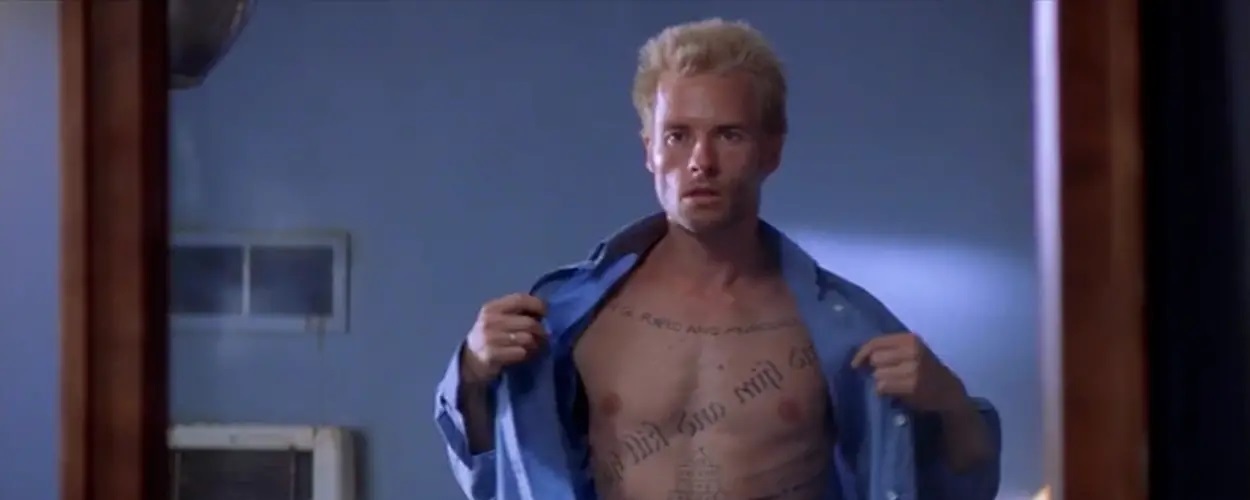
I have here a message from Vasudha Gandhi of Queens Village, N.Y., about the movie “Memento”: “Although I loved the film, I don’t understand one key plot-point. If the last thing the main character remembers is his wife dying, then how does he remember that he has short-term memory loss?” Michael Cusumano of Philadelphia writes with the same query. They may have identified a hole big enough to drive the entire plot through. Perhaps a neurologist can provide a medical answer, but I prefer to believe that Leonard, the hero of the film, has a condition similar to Tom Hanks’ “brain cloud” in “Joe vs. the Volcano”–Leonard suffers from a condition brought on by a screenplay that finds it necessary, and it’s unkind of us to inquire too deeply.
Leonard is played by Guy Pearce , in a performance that is curiously moving, considering that by definition it has no emotional arc. He has witnessed the violent death of his wife and is determined to avenge it. But he has had short-term memory loss ever since the death and has to make copious notes–he even has memos tattooed to his body as reminders.
If Leonard keeps forgetting what has already happened, we in the audience suffer from the opposite condition. We begin at the end, and work our way back toward the beginning, because the story is told backward.
Well, not exactly; it begins with a brilliant idea, a Polaroid photograph that fades instead of developing, but every individual scene plays with time running forward, and there are some lateral moves and flashbacks that illuminate, or confuse, the issue. Essentially, Leonard is adrift in time and experience, and therefore so are we.
The idea of a narrative told backward was famously used by Harold Pinter in the 1983 film “ Betrayal ,” based on his play. He told a story of adultery and betrayed friendship, beginning with the sad end and then working his way back through disenchantment to complications to happiness to speculation to innocence. His purpose was the opposite of the strategy used by writer-director Christopher Nolan in “Memento.” Pinter’s subject was memory and regret, and the way adulteries often begin playfully and end miserably. There was irony in the way the characters grew happier in each scene, while the audience’s knowledge of what was ahead for them deepened.
Nolan’s device of telling his story backward, or sort of backward, is simply that–a device. It does not reflect the way Leonard thinks. He still operates in chronological time, and does not know he is in a time-reversed movie. The film’s deep backward and abysm of time is for our entertainment and has nothing to do with his condition. It may actually make the movie too clever for its own good. I’ve seen it twice. The first time, I thought I’d need a second viewing to understand everything. The second time, I found that greater understanding helped on the plot level, but didn’t enrich the viewing experience. Once is right for this movie. Confusion is the state we are intended to be in.
That said, “Memento” is a diabolical and absorbing experience, in which Pearce doggedly plays a low-rent Fugitive who patiently makes maps, jots notes and explains over and over that he has to talk fast because in a few minutes he’ll start forgetting the conversation. A motel clerk takes advantage of his condition to charge him for two rooms at the same time and cheerfully admits his fraud, pointing out Leonard will forget it. “Even if you get revenge, you’re not going to remember it,” he’s told at one point, but his reply has a certain logic: “My wife deserves revenge whether or not I remember it.” One striking element of the film is a series of flashbacks to a case Leonard investigated when he worked for an insurance company. This involves a man named Sammy, who appears to have memory loss, although he seems otherwise just like good old Sammy. His wife, a diabetic, can’t be sure he isn’t faking his condition, and arranges a test I will not reveal. This story has relevance to Leonard’s own plight, in an indirect way.
The other major characters are Natalie ( Carrie-Anne Moss ), and Teddy ( Joe Pantoliano ). Of Natalie, he has a Polaroid inscribed: “She has also lost someone. She will help you out of pity.” Their relationship keeps starting over from the beginning. As for Teddy, his identity and role shifts mysteriously.
The purpose of the movie is not for us to solve the murder of the wife (“I can’t remember to forget you,” he says of her). If we leave the theater not sure exactly what happened, that’s fair enough. The movie is more like a poignant exercise, in which Leonard’s residual code of honor pushes him through a fog of amnesia toward what he feels is his moral duty. The movie doesn’t supply the usual payoff of a thriller (how can it?), but it’s uncanny in evoking a state of mind. Maybe telling it backward is Nolan’s way of forcing us to identify with the hero. Hey, we all just got here.

Roger Ebert
Roger Ebert was the film critic of the Chicago Sun-Times from 1967 until his death in 2013. In 1975, he won the Pulitzer Prize for distinguished criticism.

- Stephen Tobolowsky as Junior Sammy
- Joe Pantoliano as Teddy
- Mark Boone as Burt
- Guy Pearce as Leonard
- Carrie-Anne Moss as Natalie
Written and Directed by
- Christopher Nolan
Leave a comment
Now playing.
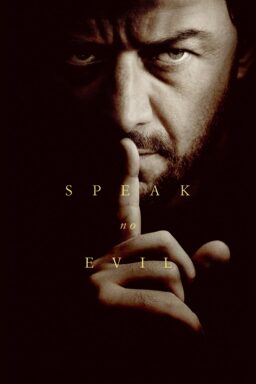
Speak No Evil (2024)
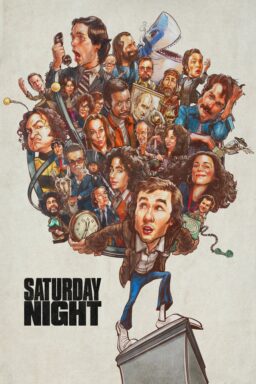
Saturday Night

The Killer’s Game

Girls Will Be Girls

The 4:30 Movie
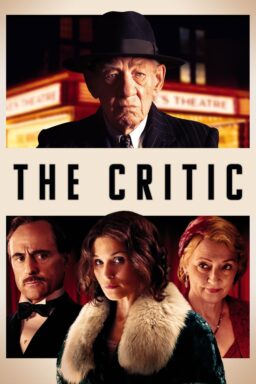
Sweetheart Deal
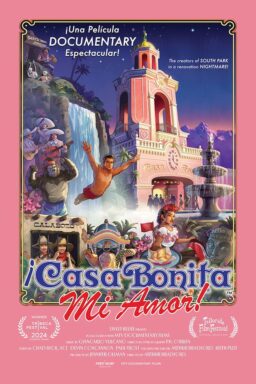
¡Casa Bonita Mi Amor!
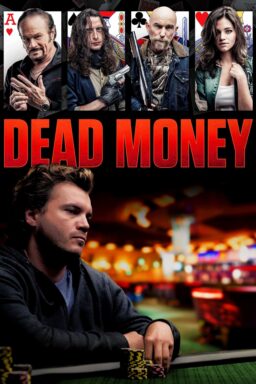
Latest articles
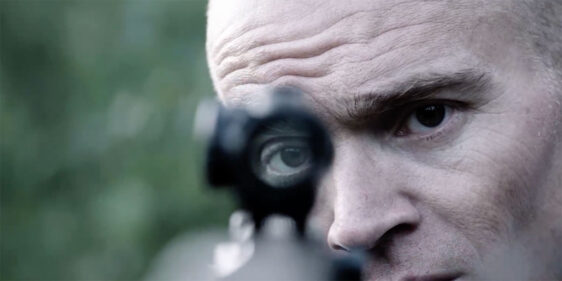
TIFF 2024: Men of War, Fanatical: The Catfishing of Tegan & Sara, Ernest Cole: Lost and Found

TIFF 2024: On Swift Horses, Meet the Barbarians, All of You

Natasha Rothwell Finds New Life in Hulu’s Winning “How to Die Alone”

Starz’ “Three Women” Stumbles Through Its Tale of Stifled Female Passion
The best movie reviews, in your inbox.
Home — Essay Samples — Entertainment — Film Analysis — A Review Of Memento Movie
A Review of Memento Movie
- Categories: Film Analysis Movie Review
About this sample

Words: 1177 |
Published: Nov 8, 2019
Words: 1177 | Pages: 3 | 6 min read
But You Don’t Know Who You’ve Become

Cite this Essay
To export a reference to this article please select a referencing style below:
Let us write you an essay from scratch
- 450+ experts on 30 subjects ready to help
- Custom essay delivered in as few as 3 hours
Get high-quality help

Prof. Kifaru
Verified writer
- Expert in: Entertainment

+ 120 experts online
By clicking “Check Writers’ Offers”, you agree to our terms of service and privacy policy . We’ll occasionally send you promo and account related email
No need to pay just yet!
Related Essays
1 pages / 536 words
6 pages / 2606 words
2 pages / 866 words
2.5 pages / 1050 words
Remember! This is just a sample.
You can get your custom paper by one of our expert writers.
121 writers online
Still can’t find what you need?
Browse our vast selection of original essay samples, each expertly formatted and styled
Related Essays on Film Analysis
Suzanne Collins' dystopian novel series, "The Hunger Games," has captured the imaginations of readers and moviegoers alike with its compelling themes that resonate with contemporary society. The story, set in a bleak future [...]
Miracles from Heaven. (2016). Directed by P. Riggen. Columbia Pictures.
In the story of Gladiator, the Roman general Maximus is betrayed by the evil Emperor Commodus. His family is murdered, and he becomes a slave, and then sold off to become a gladiator. It’s a great story of revenge but the [...]
As the saying goes, “Beauty is only skin deep.” Elle Woods, in the film Legally Blonde, fulfills the proverb beautifully. The film debuted in 2001 during a time when feminism was not as notable as it is today; the early 2000s [...]
Introduction of the movie "Fight Club" and its initial reception Mention of the movie's actual genre and surprise ending Brief summary of the movie's plot, including the protagonist's transformation into Tyler [...]
Blade Runner 2049 is not only one of the greatest movies to be released in 2017, but one of the greatest movies in the sci-fi genre. Not only does this movie pay respects to the 1982 original film Blade Runner, but it manages to [...]
Related Topics
By clicking “Send”, you agree to our Terms of service and Privacy statement . We will occasionally send you account related emails.
Where do you want us to send this sample?
By clicking “Continue”, you agree to our terms of service and privacy policy.
Be careful. This essay is not unique
This essay was donated by a student and is likely to have been used and submitted before
Download this Sample
Free samples may contain mistakes and not unique parts
Sorry, we could not paraphrase this essay. Our professional writers can rewrite it and get you a unique paper.
Please check your inbox.
We can write you a custom essay that will follow your exact instructions and meet the deadlines. Let's fix your grades together!
Get Your Personalized Essay in 3 Hours or Less!
We use cookies to personalyze your web-site experience. By continuing we’ll assume you board with our cookie policy .
- Instructions Followed To The Letter
- Deadlines Met At Every Stage
- Unique And Plagiarism Free

Movie Memento Uncovers How the Brain Remembers and Interprets Events From Clues
Summary: Using the movie Memento, researchers discover how the brain creates memories to piece together complex storylines.
Source: Aalto University.
Key repeating moments in the film give viewers the information they need to understand the storyline. The scenes cause identical reactions in the viewer’s brain. The results deepen our understanding of how the brain functions, how narratives work in film, and memory mechanisms impaired by conditions such as Alzheimer’s disease.
In an Aalto University film study combining art and neuroscience, viewers were shown Christopher Nolan’s early classic Memento (2000). The protagonist suffers from long-term memory loss and is unable to retain new memories for no longer than a few minutes. The events unfold in reversed chronological order. To provide the viewer means to piece together and understand the storyline, key scenes repeat at certain intervals throughout the film. These scenes work as clues: they give new information needed to understand the plot.
Every time they appear, the key moments make the same regions of the brain react in an identical fashion. Even the brains of different viewers show similar activity during the same vital scenes.
‘Normally people make sense of a film’s plot in their own individual ways. So far it has been difficult to capture indications of simultaneous understanding in the brains of several viewers with brain imaging methods. We have now, however, managed to identify brain activity connected to the story being reconstructed in the viewer’s mind. The repeating key moments in Memento provide an opportunity to pinpoint viewers’ cognitive activities: they react in a similar way to the information they get from the key moments’, explains Professor Pia Tikka of Tallinn University, who leads the NeuroCine research group initially formed in Aalto University.
The research made use of functional magnetic resonance imaging (fMRI) – which measures changes in the blood oxygen levels in the brain – and also multivariate analysis when comparing the brain activity of different viewers. The brain was divided into three-dimensional data points called voxels. Using multivariate analysis, the researchers studied the activation patterns of the voxels. The key moments in the film triggered similar and repeating patterns the researchers say are close to being “neural fingerprints”.
‘There is a total of 15 key moments in Memento that give the viewer opportunities to better understand the story – sort of “The Butler Did It”-types of revelations. While the activation of the voxels varies randomly during other parts of the film, at each of the 15 key moments certain voxels are in the same position for each viewer and form an identical fingerprint pattern,’ describes Iiro Jääskeläinen, Aalto University professor in systems neuroscience.
The researchers observed the fingerprint patterns across large regions of the brain, especially in the prefrontal lobe and parietal lobe.
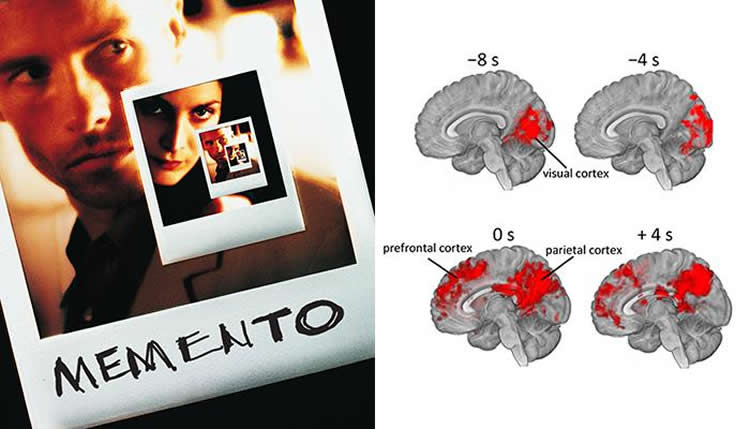
‘What is astounding is that the change in the viewer’s brain, and especially in the visual cortex, starts to occur already seconds before the key scene even begins. Clearly there are some kinds of clues in the film communicating to the brain that something worth noting is about to happen. This speaks of the brain’s ability to anticipate and predict,’ Jääskeläinen adds.
Viewers in the control group were shown the film’s events in chronological order, where the key moments were not repeated. No fingerprint patterns emerged, and there was no anticipatory activity either.
Unprecedented in the setup was that the test subjects freely viewed a feature-length, 105-minute film in its entirety in the brain scanner.
‘In brain research, it is more common to show test subjects short sections of the same film or from different films and seek answers for strictly predefined questions. Such a setup, however, does not allow the film’s dramaturgy and characters’ development to properly play out. We have taken a step forward in understanding both the functioning of the brain and the process of understanding film narratives, says professor Tikka, also a filmmaker herself.
The results help comprehend how the brain remembers things based on received or obtained clues.
‘Memento simulates what it feels like to be a person who has suffered damage to the hippocampus that has obliterated the formation of long-term memories. Even short-term memories last only for a couple of minutes before they are gone. The hippocampus also gets damaged – albeit to a lesser extent – in cases of severe and protracted stress as stress hormones gnaw the brain. Our work also sheds more light on the neural basis of memory which is of great help when we wish to understand dementias such as Alzheimer’s disease,’ Jääskeläinen believes.
Source: Iiro Jääskeläinen – Aalto University Publisher: Organized by NeuroscienceNews.com. Image Source: NeuroscienceNews.com image is credited to Oy Nordisk Film Ab and Iiro Jääskeläinen. Original Research: Abstract in NeuroImage . doi: 10.1016/j.neuroimage.2018.01.068
[cbtabs][cbtab title=”MLA”]Aalto University “Movie Memento Uncovers How the Brain Remembers and Interprets Events From Clues.” NeuroscienceNews. NeuroscienceNews, 21 February 2018. <https://neurosciencenews.com/memento-memory-interpretation-8537/>.[/cbtab][cbtab title=”APA”]Aalto University (2018, February 21). Movie Memento Uncovers How the Brain Remembers and Interprets Events From Clues. NeuroscienceNews . Retrieved February 21, 2018 from https://neurosciencenews.com/memento-memory-interpretation-8537/[/cbtab][cbtab title=”Chicago”]Aalto University “Movie Memento Uncovers How the Brain Remembers and Interprets Events From Clues.” https://neurosciencenews.com/memento-memory-interpretation-8537/ (accessed February 21, 2018).[/cbtab][/cbtabs]
Brain mechanisms underlying cue-based memorizing during free viewing of movie Memento
How does the human brain recall and connect relevant memories with unfolding events? To study this, we presented 25 healthy subjects, during functional magnetic resonance imaging, the movie ‘Memento’ (director C. Nolan). In this movie, scenes are presented in chronologically reverse order with certain scenes briefly overlapping previously presented scenes. Such overlapping “key-frames” serve as effective memory cues for the viewers, prompting recall of relevant memories of the previously seen scene and connecting them with the concurrent scene. We hypothesized that these repeating key-frames serve as immediate recall cues and would facilitate reconstruction of the story piece-by-piece. The chronological version of Memento, shown in a separate experiment for another group of subjects, served as a control condition. Using multivariate event-related pattern analysis method and representational similarity analysis, focal fingerprint patterns of hemodynamic activity were found to emerge during presentation of key-frame scenes. This effect was present in higher-order cortical network with regions including precuneus, angular gyrus, cingulate gyrus, as well as lateral, superior, and middle frontal gyri within frontal poles. This network was right hemispheric dominant. These distributed patterns of brain activity appear to underlie ability to recall relevant memories and connect them with ongoing events, i.e., “what goes with what” in a complex story. Given the real-life likeness of cinematic experience, these results provide new insight into how the human brain recalls, given proper cues, relevant memories to facilitate understanding and prediction of everyday life events.
Manipulating Brain Waves During Sleep With Sound
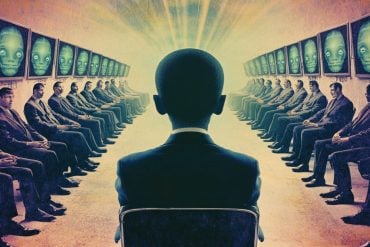
AI Conversations Help Conspiracy Theorists Change Their Views

High Doses of ADHD Meds Linked to Increased Psychosis Risk

Key Neurons Found to Predict Memory of People and Places
Join Now to View Premium Content
GradeSaver provides access to 2366 study guide PDFs and quizzes, 11012 literature essays, 2786 sample college application essays, 926 lesson plans, and ad-free surfing in this premium content, “Members Only” section of the site! Membership includes a 10% discount on all editing orders.
Sound Editing Analysis in Memento Anonymous 12th Grade
Written and directed by Christopher Nolan, the 2001 indie mystery film Memento hits home as a thrilling cinematic masterpiece of compositional elements that keeps viewers on the edges of their seats. While all elements of the film are important to its quality and general appeal, sound editing is what can make or break a film. When used in correct balance, the sound is used to draw viewers in through an audible story along with a visual story to provoke emotions the director wishes to generate. In Memento, Christopher Nolan captures the mysterious theme of the plot through sharp sound effects and a brooding soundtrack to engage and excite viewers in the film’s growing development to the climax.
In the opening scene, mystery and intrigue settle quickly throughout the audience as the events of murder plays backward from the killer shaking a polaroid of the crime scene dry, to the man’s terrified shout before the trigger was pulled. The opening credits roll during a long-duration point-of-view shot of the killer’s hand holding and shaking the polaroid photo, along with a non-diegetic soundtrack that sets the serious mood for the rest of the scene and the plot. Although physically this clip is rather uneventful, the swelling,...
GradeSaver provides access to 2312 study guide PDFs and quizzes, 10989 literature essays, 2751 sample college application essays, 911 lesson plans, and ad-free surfing in this premium content, “Members Only” section of the site! Membership includes a 10% discount on all editing orders.
Already a member? Log in

IMAGES
VIDEO
COMMENTS
Exclusively available on IvyPanda®. Memento is a film written and directed by Christopher Nolan about a man named Leonard Shelby, seeking revenge for the rape and murder of his wife. He himself was injured in the crime committed as he tried to save his wife, causing him brain damage that resulted in 'severe anterograde memory dysfunction ...
In both 'Memento' and 'Inception,' for example, Nolan has addressed the theme of the state of mind and memory. While the two films describe different individuals with different roles, the nature, state, and role of human memory are significant themes. Arguably, the two films tend to address a number of social problems from a ...
Memento: Christopher Nolan's Kaleidoscopic, Subjective Neo-noir. by A. J. Black 3 years ago 2. While the first major release from future cinematic powerhouse Christopher Nolan technically premiered at the Venice Film Festival in 2000, Memento debuted in American cinemas in March of 2001 and works as an example of the growing bridge between 20 ...
Psychological Cognitive Analysis on Movie "Memento" Essay. The movie "Momento" directed by Nolan depicts a story of a man suffered from amnesia as a result of head injury when a killer confronted his wife. The movie vividly portrays psychological difficulties and problems experienced by the main character, Leonard, and ways he invested ...
The mesmerizing masterpiece "Memento". In the wake of the disappointing " Shutter Island," it's especially gratifying to look back at Christopher Nolan's feature film "Memento" (2001), an indie mystery starring Guy Pearce as a San Francisco man in Los Angeles suffering from anterograde amnesia, or short-term memory loss.
Memento Summary and Analysis of Part 1. Summary. We see a hand holding a Polaroid photograph, the subject of which is hard to make out. It soon becomes clear that time is moving backward, as we see the photo become less developed, and get pulled back into the Polaroid camera. The man is Leonard Shelby, and as time continues to move backward, we ...
Christopher Nolan's Memento is a complex and thought-provoking film that has continued to mystify viewers since its release in 2000. The film is a cinematic puzzle, with its fragmented narrative structure and unreliable protagonist making it a challenging but rewarding viewing experience. In this article, we will delve deep into the complexities of Memento, analyzing its themes, characters ...
The Inherent Structure of a Narrative. The complex and sophisticated Storyweaving found in Memento is more than a hook—its essential towards communicating Nolan's argument. That sense of memory loss—of being able to forget and not being able to ignore—is woven tightly into the very fabric of the narrative.
Film 'Memento' by Christopher Nolan is a cinematic puzzle that challenges conventional storytelling techniques. Through its nonlinear narrative structure, the film immerses the audience in the fragmented mind of its protagonist, Leonard Shelby, who suffers from short-term memory loss.In this essay, we will unravel the intricacies of 'Memento's' storytelling and examine how this unconventional ...
Memento Summary. The film begins with us learning that Leonard has a condition that causes him to have no short-term memory. He forgets things moments after they occur. We then are introduced to Teddy, of whom Leonard has a Polaroid photograph which has "Don't believe his lies" written on the back. Leonard has had no short-term memory since the ...
Nolan's filmmaking style is influenced by the film genres like noir, sci-fi, psychological thriller and crime drama. Nolan's films Memento and Inception explore the wide range of possibilities of postmodern filmic narratives. Memento tells the story of Leonard Shelby, a man suffering from anterograde amnesia, searching for his wife's ...
Memento Film Analysis. Memento Film Analysis. Satisfactory Essays. 371 Words. 2 Pages. Open Document. During the course of the film, we watch the dissolve into the second Sino-Japanese war. This war lasted from 1937 to 1945. In total this war boast around 20 million casualties, and a horrific amount of decay and destruction.
Memento is an American psychological thriller by Christopher Nolan that narrates the story about Leonard Shelby, a man who suffers from loss of long-term memory, which prevents the heroes from storing new memories. In order to remember the events from the past, Shelby develops a system of notes, photos, and tattoos that remind of his intentions ...
Analysis Of The Film Memento. The film Memento (Christopher Nolan, 2001) uses the set of depth-of-field and angles to enhance the film's connection to the audience. The use of cinematography works through the film using narration, camera motions, and angles to show to the uniqueness and differ from other films.
Memento is a psychological thriller directed by Christopher Nolan, written by his brother, Jonathan Nolan, and produced by Suzanne and Jennifer Todd.It was released on September 5, 2000. Leonard Shelby, the protagonist, is in search of the person who raped and killed his wife. The problem is that he suffers from short-term memory loss, so cannot accumulate any new information in the present.
Memento Film Analysis; Memento Film Analysis. Better Essays. 1825 Words; ... Memento the Movie Essay. In the film Memento, written by director Christopher Nolan, the main character Leonard Shelby, is a confused and damaged man that wants the revenge for the murder of his wife. We can say that Lenny lives in his own world uniquely different from ...
Drama. 113 minutes ‧ R ‧ 2001. Roger Ebert. April 13, 2001. 4 min read. I have here a message from Vasudha Gandhi of Queens Village, N.Y., about the movie "Memento": "Although I loved the film, I don't understand one key plot-point. If the last thing the main character remembers is his wife dying, then how does he remember that he ...
In the movie the main character Leonard Shelby is initially portrayed as a man incapable of forming new memories who seeks vengeance for his late wife; a lovely gentle woman who was raped and murdered by one or more men on the night that Lenny lost his memory. The movie begins with Leonard answering the phone, we later find out that the man on ...
Memento Film Analysis. 1835 Words8 Pages. In the year 2000, the philosophical movie genre was once again revolutionized when the psychological thriller, Memento, was released. Directed by Christopher Nolan and portrayed by Guy Pearce, Carrie-Anne Moss, and Joe Pantoliano, Memento became an instant classic, as Christopher Nolan again blew ...
In an Aalto University film study combining art and neuroscience, viewers were shown Christopher Nolan's early classic Memento (2000). The protagonist suffers from long-term memory loss and is unable to retain new memories for no longer than a few minutes. The events unfold in reversed chronological order. To provide the viewer means to piece ...
Film Analysis of Memento Essay. Columbia Tristar Films starring Guy Pearce, Carrie-Anne Moss, and Joe Pantoliano released "Memento" in 2001. The movie was produced by Suzanne and Jennifer Todd, and was directed by Christopher Nolan. Christopher Nolan also wrote the short story and screenplay. This film is about a man named Leonard, played ...
Sound Editing Analysis in Memento. Written and directed by Christopher Nolan, the 2001 indie mystery film Memento hits home as a thrilling cinematic masterpiece of compositional elements that keeps viewers on the edges of their seats. While all elements of the film are important to its quality and general appeal, sound editing is what can make ...